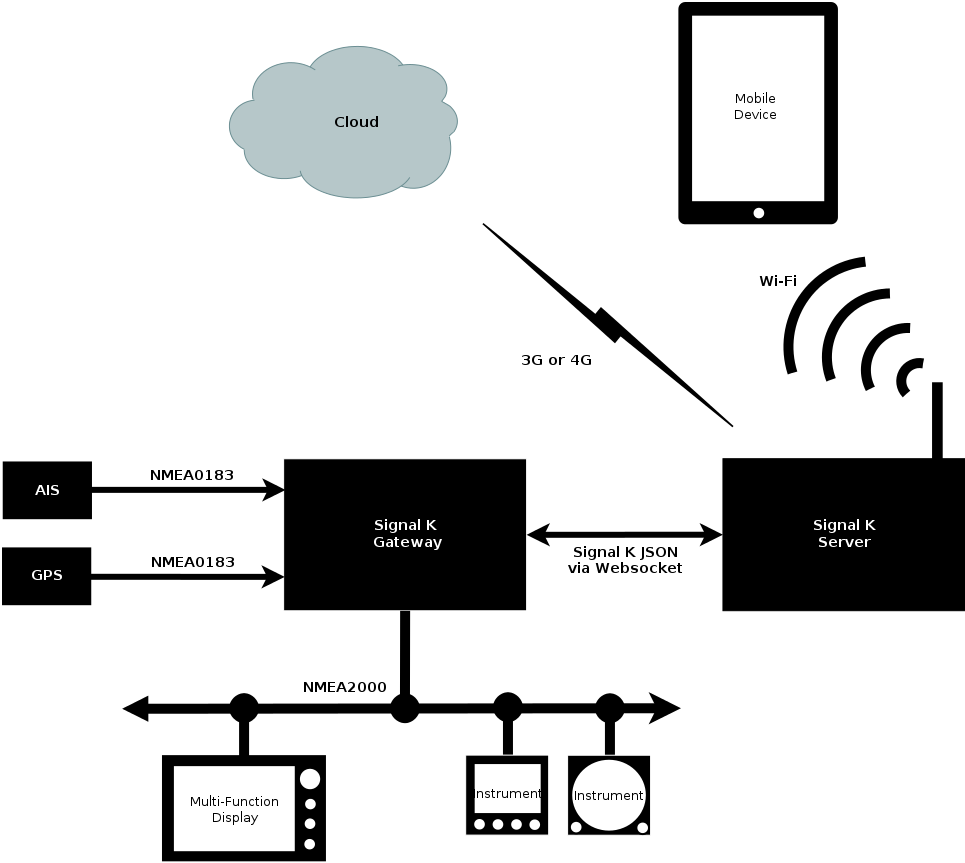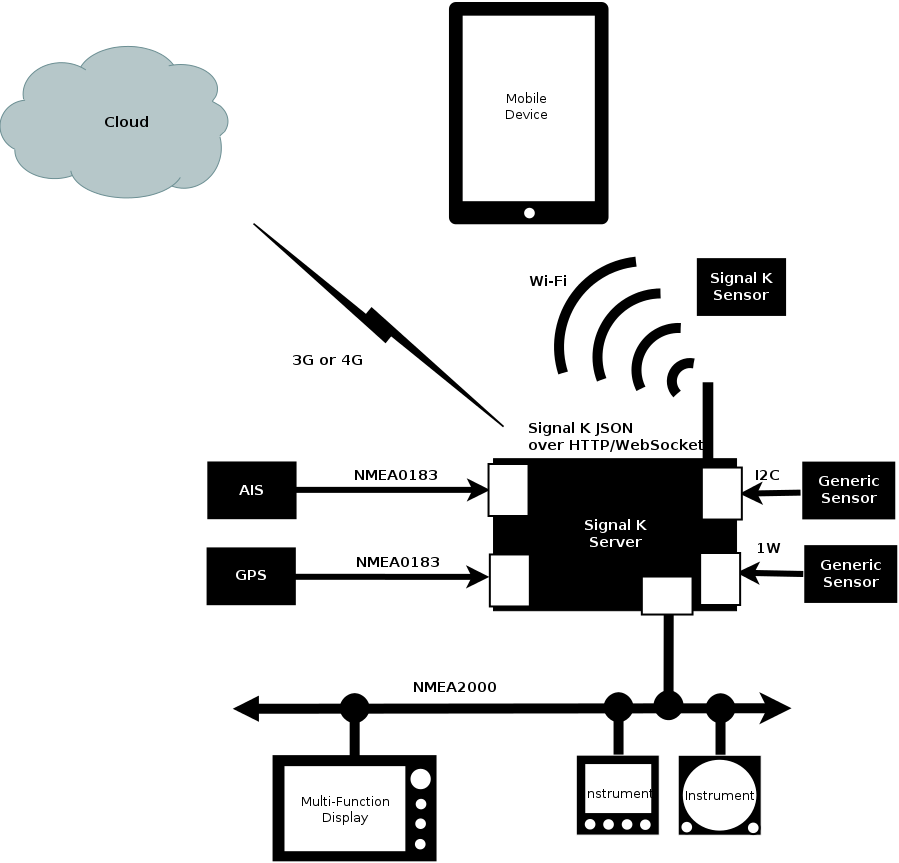Introduction
This is the documentation for the Signal K Specification 0.0.1-12 version, which is available in the following formats;
What is Signal K?
Signal K is a modern and open data format for marine use. It is an Internet friendly standard built on standard web technologies, such as JSON and WebSockets. Signal K is Free and Open Source software. This document is licensed under the Creative Commons CC-BY-SA license. All Signal K source code is licensed under the Apache License, Version 2.0. Signal K is developed in the open with help from the marine community. Your ideas and feedback are valuable and welcome.
Signal K is designed to work in harmony with the boat's existing navigation equipment that might use NMEA0183, NMEA2000 or proprietary data protocols, converting and enhancing this information to a modern "web friendly" format that can be shared, processed and displayed on the latest web apps, mobile devices and cloud servers. A typical NMEA based setup consists of an NMEA-Signal K gateway and an optional server. The gateway translates the NMEA data to Signal K and the server can host additional functions like logging, cloud integration and data analysis.

One major advantage of Signal K is the ability to represent data from heterogeneous sources. In addition to traditional NMEA sources data from generic sensors as well as modern Signal K enabled sensors can be fused into a single data model and a single protocol for accessing the data. Another typical setup is a Signal K server with adapters and converters for the different sources.

Signal K Data Model (A.K.A. The Schema)
The Signal K Data Model or schema defines a universal model for marine related information and it is specified as a JSON schema. See the Signal K Data Model section for details.
In traditional marine standards there are many tightly defined messages, each with a specific purpose, but there is no data model to relate them. Furthermore, any device which needs to decode those messages must have a copy of the data dictionary in order to do so. By defining a data model in JSON we can make the messaging layer simpler, and easily extensible. We define consistent units and meta data for each data point in the model. This means that a specific data point (e.g. COG) will always be found at a predictable address.
It also means that a display device such as a chartplotter implementing Signal K does not need to know about the data model beforehand. It can query the central Signal K server on the boat to get all the information it needs to display any data point. This metadata may include information such as the unit of measure, minimum and maximum permissible values, alarm thresholds and localized display name for every data point in the model.
Signal K Message Format
Signal K defines methods for combining arbitrary data from the Data Model into valid messages. These messages are in UTF-8 JSON format.
Rather than define hundreds of specific messages, Signal K has a few common message formats which can contain any combination of data from the Data Model. This means that we don’t need new messages for every new case, just extra data in the payload. It means that any device can read any message and a device can introduce a new data point which can be understood by existing devices without the need for firmware upgrades.
Signal K Transport Layer
Signal K does not define the transport or wire protocol. Signal K messages are JSON text and can be sent over almost any transport layer. However, we do provide guidance on how to make an initial connection, handle negotiation, subscription, and disconnection for a given transport (e.g. TCP/IP or serial).
Where possible we use well established standards like HTTPS, REST, WebSockets, MQTT, STOMP, etc. But within each method there are always many options in message addressing, formating, or transfer (GET, POST), etc.
The goal is to try to establish sensible conventions for each protocol, to make development and interconnection more predictable.
Signal K Implementations
The Signal K project has Open Source reference server implementations in Node and Java and example web apps and reference code. There are also commercial Signal K applications and solutions, including mobile apps available on the Apple App and Android Play Stores, as well as hardware products like iKommunicate.